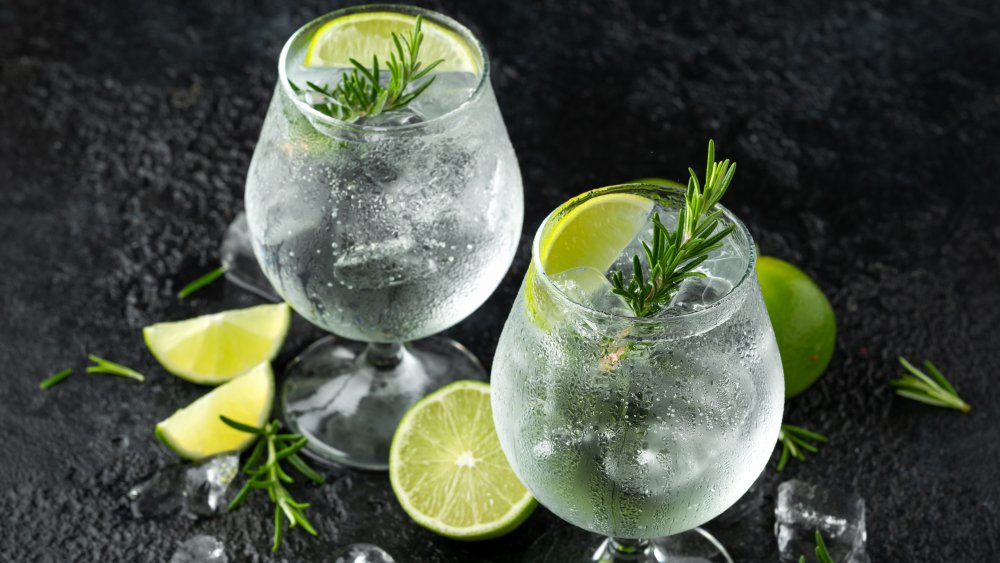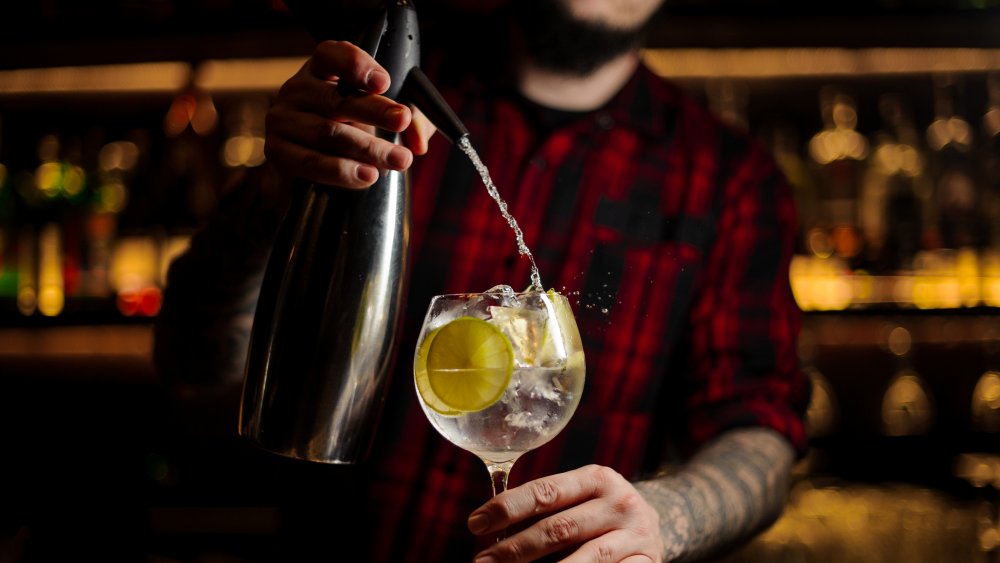The Subtle Mistake You're Making With Your Gin And Tonic
So you're all ready to craft that perfect G&T. You've carefully selected the very best top-shelf gin, you've tracked down the most exclusive boutique brand of artisanal tonic water, and you've sourced the finest, freshest and juiciest limes. You've even gone so far as to acquire the perfect gin and tonic glassware (balloon glasses are best, according to spirits tasting club Flaviar) and to research the perfect proportion of gin to tonic for this classic cocktail (one part gin to two parts tonic).
Before you begin mixing, however, make sure you're not going to make this one mistake that could absolutely ruin — ok, maybe not ruin, but at least mar the perfection of — that long-anticipated drink. You've worked so hard to line up all of the perfect ingredients, so you really owe it to your G&T — and to yourself — to mind how you pour.
How pouring the tonic can impact your drink
Drinks expert Michael Stringer, managing director of the UK's Black Leaf Events, told the British edition of Good Housekeeping that pouring the tonic too fast can cause your drink to taste flat, as it "causes the tonic to fizz up at the top of your drink, releasing lots of CO2 which means less fizz in your glass."
Alistair Wilson, managing director of Isle of Skyle Distillers, also recommends being mindful how you pour. He suggests "approaching this in the same way you'd pour a pint of beer. Tilt the glass sideways, then slowly bring it upright." This will allow the tonic to hit the side of the glass first rather than splashing right down to the bottom, and this can also reduce the rate at which the carbon dioxide evaporates. What's more, Wilson says to avoid over-stirring the G&T, as this will also hasten the drink's going flat.
Needless to say, mixing your drink in a cocktail shaker is right out, unless 007 shows up and requests you make him a G&T instead of his usual martini. Unless you like flat fizzy water, however, you should still mix your own drink as gently as possible.

